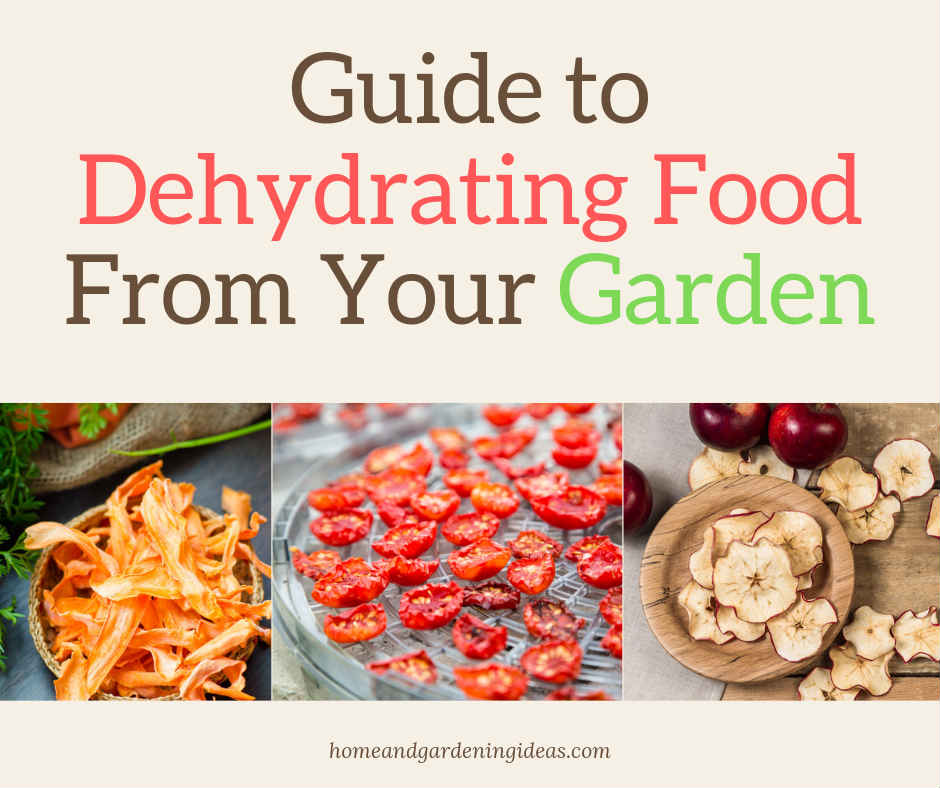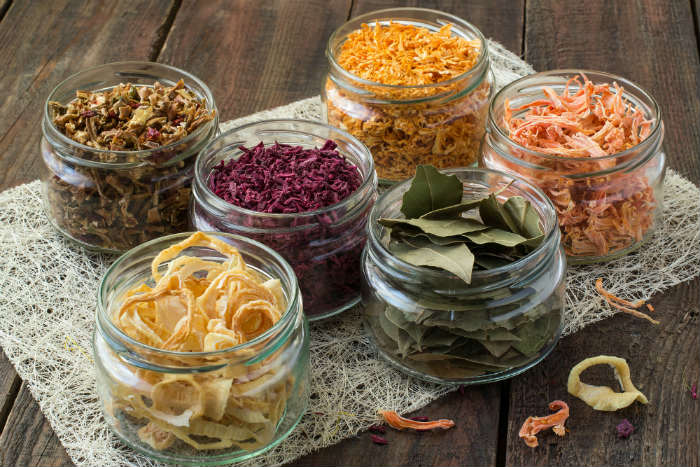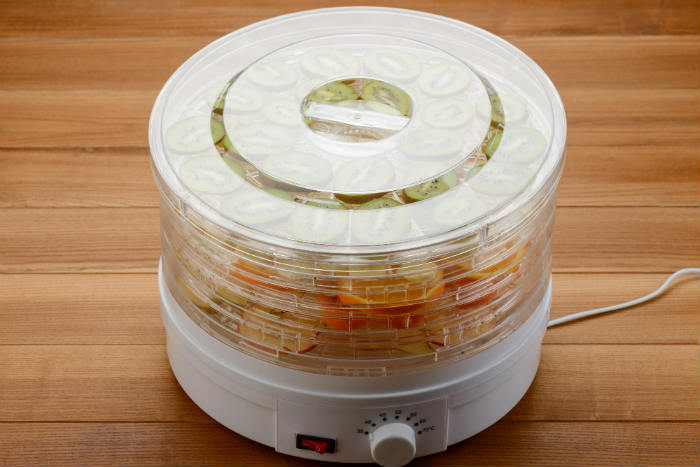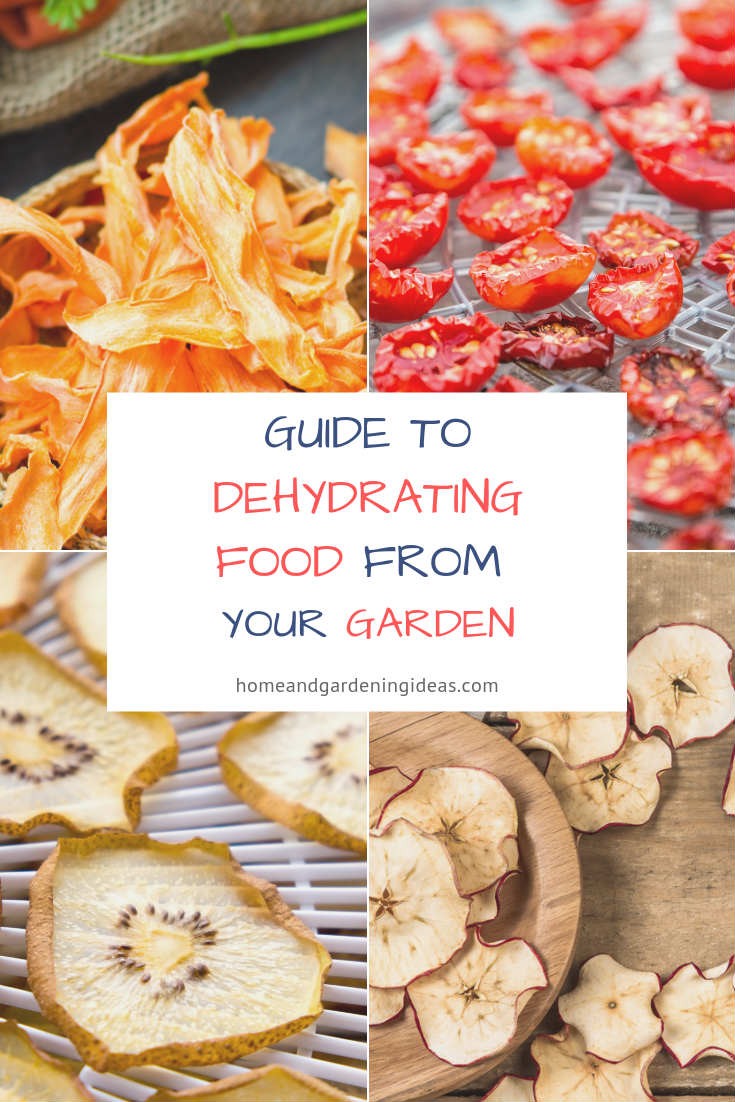Dehydrating Food Guide: A Simple Guide
When your garden is overflowing with vegetables, it’s time to kick your preservation methods into overdrive. Aside from canning and freezing, dehydrating is another method for food preservation, allowing you to save all of your harvest or extra food scraps.
The great thing about dehydrating is that you can use this method with almost all vegetables and fruit that you grow. It doesn’t require too many tools either!
Home food dehydration depends on three principles for success, which are:
- Using a controlled, warm environment that can remove moisture without cooking the good.
- The dry air absorbs the moisture during the process
- Air circulation takes out the moisture from the environment.
When you dehydrate food, you remove 80-95% of moisture, which stops spoilage while retaining nutrients in the food.
4 Reasons Why You Want to Dehydrate Food
Save Money
Dehydrating saves money, and it’s one of the cheapest ways to preserve food. You don’t need to purchase canning jars, pectin, and all of those supplies. All you need is a dehydrator, but some people dehydrate in the oven. Then, you store the food in airtight containers.
Dehydrating lets you make things such as sundried tomatoes, dried soup mixes, spice blends, and more. Dried fruit is expensive in the store, but you can make dehydrated fruit at home with little effort.
Keeps the Flavor
When you dry vegetables and fruit that you just harvested, you can preserve the flavor from peak ripeness all year-round. Drying apples in season means that you can get the apples for the best price and the best flavor, and then enjoy it throughout the year.
Retains the Nutrients
Drying the food you grow keeps the most nutrients in the food as possible. Canning can degrade nutrients over time, but dehydrating sucks all of those nutrients into the dried fruit and vegetables. So, you get the most that you can.
Convenience
You can make dehydrated snacks, prepare soup mixes that just need water to be added, and dried meat. Making a pot of vegetable soup becomes so easy when you have to dump in the mix and water. That’s it!
Common Tools You Need to Dehydrate
- Dehydration recipes
- Electric Dehydrator
- Kitchen utensils and equipment
- Quality ingredients
- Airtight and moisture resistant food storage containers, such as canning jars or vacuum-sealed bags
Foods You Should NOT Dehydrate
For the most part, you can dehydrate almost all foods, but there are a few that you shouldn’t.
Avocados
Bananas
Olives
Eggs
Cheese
Butter
Milk
Nuts; Nut Butters
7 Steps to Dehydrate Food
- Review the recipe that you’re following and make sure you read the instructions.
- Gather all of the ingredients and equipment.
- Decide how you want to store the dehydrated food. Clean and dry those containers and let them cool completely.
- Prepare the fresh vegetables and ingredients according to the recipe. Some recipes recommend that you blanch the vegetables and fruits as a pretreatment technique, such as blanching. This step also requires you to slice and cut the veggies.
- Put the food in the electric dehydrator based on the recipe.
- After the food is dehydrator, put the food into the container or storage that you selected. Make sure you label the container with the date.
- Store these foods in a cool, dry, and dark place. Be sure to check from time to time for moisture and mold.
Fruit & Vegetable Drying Times
Here is a general guide of drying times, but you might need to adjust the times based on the juiciness and the size of your produce. Produce needs to be dried between 105-118℉ to make sure the food isn’t cooked.
| Food | Time | Food | Time |
| Apples | 7-15 Hours | Apricots | 20-28 Hours |
| Cherries | 13-21 Hours | Figs | 20-25 Hours |
| Peaches | 8-16 Hours | Pears | 8-16 Hours |
| Persimmons | 10-19 Hours | Strawberries | 5-15 Hours |
| Green Beans | 6-12 Hours | Beets | 7-12 Hours |
| Carrots | 6-10 Hours | Corn | 6-10 Hours |
| Mushrooms | 3-7 Hours | Onions | 4-8 Hours |
| Peas | 4-8 Hours | Peppers | 4-8 Hours |
| Potatoes | 6-14 Hours | Squash | 8-11 Hours |
| Tomatoes | 5-9 Hours | Zucchini | 6-11 Hours |
please share on pinterest
A Few Simple Dehydrated Recipes to Try
Dehydrated Apples
- Pick firm, tart apples that are free of blemishes. Wash, peel, and core the apples.
- Cut the apples into ¼ to ½ inch slices or rings. A mandolin slicer is excellent for this step.
- An optional step is to use the Fruit-Fresh powder by Ball to stop the apples from discoloring.
- Dry at 130-135℉ until flexible and bendable.
Dehydrated apples are a great snack. You can also use them in baked goods, such as in crisps or pies.
Sweet Potato Chips
Are you ready to make a yummy snack? You can alter this recipe based on your preferences.
- Peel sweet potatoes and slice with a mandolin slicer.
- Toss the slices in a bowl with melted coconut oil, sea salt, and cinnamon.
- Put in the dehydrator for 12-20 minutes at 125℉.
Dehydrated Sweet Peppers
You can toss these dehydrated sweet peppers in soups and casseroles. They’re one of the easiest vegetables to dehydrate because you don’t need to blanch them first.
- Wash and de-seed the peppers.
- Cut the peppers in half and then into strips. Cut the strips into ½ inch pieces.
- Put the peppers in a single layer on dehydrator sheets.
- Dehydrate them at 125-135℉ for 12-24 hours.
Dehydrated Celery
Dehydrated celery is a way to preserve your bumper crop, and you can toss them into soups. It’s perfect for those winter-time soups.
- Wash the celery and cut into uniform pieces.
- Put the celery on the dehydrator trays. Leave room for airflow.
- Dehydrate them at 125-135℉ for 6-14 hours, depending on the humidity in your area.
Dried Cranberries
Cranberries are a seasonal item, so fresh cranberries are hard to find in the summer. If you love dried cranberries as a snack, you can dehydrate an entire year’s supply.
- Put water into a pot and bring it to a rolling boil. Add the cranberries and set the timer for 2 minutes.
- Remove the cranberries in a colander.
- If you want the cranberries to be less tart, sprinkle 1 TBSP of sugar per one cup of cranberries.
- Lay the cranberries in a single layer on the tray.
- Dehydrate at 135℉ for 8-12 hours.
 Home and Gardening Ideas At home and Gardening ideas we believe inspiring readers about homesteading, self sufficiency
Home and Gardening Ideas At home and Gardening ideas we believe inspiring readers about homesteading, self sufficiency










